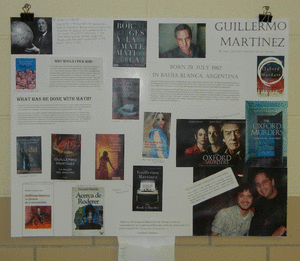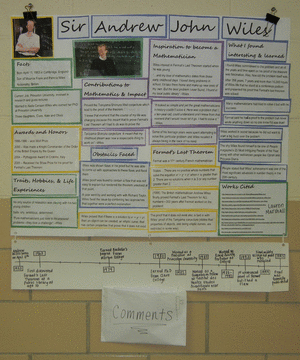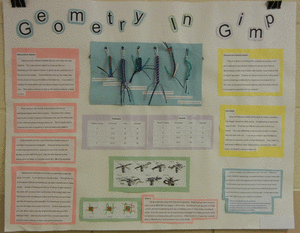Assessment: Posters
Written by: Dr. Julian Fleron
“Biographical history, as taught in our public schools, is still largely a history of boneheads; ridiculous kings and queens, paranoid political leaders, compulsive voyagers, ignorant generals – the flotsam and jetsam of historical currents. The [wo]men who radically altered history, the great scientists and mathematicians, are seldom mentioned, if at all.” — Martin Gardner
Goals
One of our goals in DAoM includes having mathematics for liberal arts [MLA] students see mathematics as an evolving, human subject – one that is undergoing enormous contemporary growth. Yet in one of our typical classes of 35 students the only mathematician who has made significant contributions since the year 1900 that anyone in the class can name is John Nash. And this only because a few of the students have seen the movie
This is after 12+ years of education in mathematics. Would we consider people to be educated if they could not name an important modern poet, author, composer, politician, scientist, etc.?
Posters
For over a decade we have had MLA students create posters as part of their work in the course. Originally the sole poster topic was biographical posters of mathematicians whose important work occurred after the year 1900. The assignment requires that each student chooses a different mathematician by signing up on a public sign-up sheet. At first the students are concerned that there are not enough important mathematicians for 70+ students to find someone unique. As they search they find this concern is unwarranted.
And they find mathematicians who actually interest them: because their mathematical work is of import to the students’ area of study, they had to overcome religious, gender, race or sexual orientation prejudices, they share a name with the student, they share a nationality with the student, they had hobbies or made contributions outside of mathematics that are of interest to the students, etc. When referring to the subject of their poster, students universally speak of “my mathematician” as if they had adopted this particular person!
It is an eye-opening experience for the students. Not only do they learn about “their mathematician” in depth, but they peer-grade 10 other posters and get to see dozens more – really challenging their limited perceptions of mathematics as a human endeavor and one undergoing enormous contemporary growth. It is also an independent project that enables them to utilize their creativity and tailor their project to their interests. It is very popular.
Because the posters hang in the hallways of the Department of Mathematics (so students in the course have opportunities to complete the peer grading) there is a larger benefit. The walls transform into a sort of museum-like exhibit of mathematics. Other students, faculty, and visitors to our department read the posters as they wait for classes, move through the halls and have a poster catch their eye, etc. Hundreds of people are enriched by this semester-long display of posters. Early in the semester we often get the question, “Hey, when are the first posters coming?”
Assignment and Assessment Criteria
In the linked example of my "Mathematical Biography Poster Assignment", students learn about the expectations.
Your poster will be assessed by peers in your class, by your professor, and by yourself. Assessment, on a scale of 1 - 5, will be used to reflect how well each poster achieved each of the following categories.
- An informative presentation of biographical data.
- An engaging portrayal of the subject as a human being from whose life and work everybody can learn.
- Success in using the subject's biography to aid in our efforts to demonstrate that mathematics is a vital, living, dynamic, and humanistic discipline.
- Accessible description(s) of the subject's mathematical contributions, impact on the field of mathematics, leadership in the community of mathematicians, broader intellectual impact, and/or broader societal impact.
- A physical construction of a high quality poster, including: appropriate design, pleasing visual layout, effectiveness, appropriate mix of media and information, effort, etc.
Full specifics about the peer-assessment, self-assessment, construction of the poster, reason for posters, etc. are spelled out in the linked assignments below.
Broader Poster Ideas
After several semesters it became clear that posters provide opportunities to explore many other essential topics as well. A list of poster topics that have been used in our MLA courses is listed below. Complete assignments are linked as PDF copies.
 Biographies of 20th/21st century mathematicians
Biographies of 20th/21st century mathematicians Mathematical Art and Nature
Mathematical Art and Nature Mathematical Art and Sculpture
Mathematical Art and Sculpture Geometry
Geometry Patterns
Patterns Paradigm Shifts
Paradigm Shifts
With a course focus on geometry or patterns, for example, there are so many objects, ideas, inventions, and applications to consider that it is impossible to include them all. Having students do posters greatly enriches the diversity of the course.







